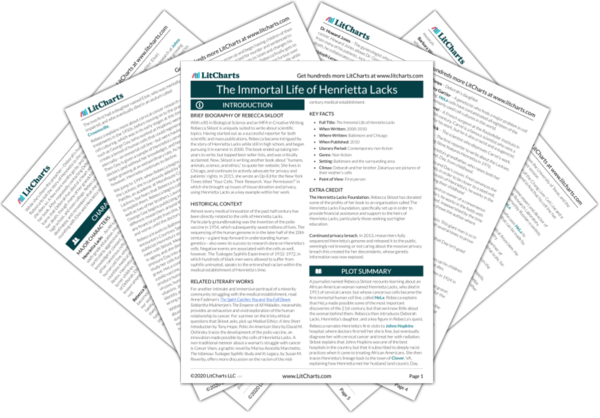The head of tissue culture research at , George Gey is the scientist responsible for growing into the first immortal human cell line. Having worked his way up from nothing, Gey is incredibly generous with his discovery, believing it to be his duty to share it with the rest of the scientific community. Although the Lackses believe that Gey used their mother for profit, it is unlikely that he made much if any money off of his innovation.
